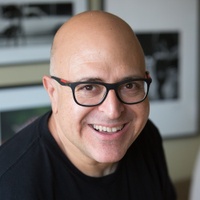On finding your path organically
Prelude
Christine Wong is an author, plant-based cook, and advocate for eco-friendly choices who blends cultural representation with culinary expertise. Listed as one of the best new vegan cookbooks of 2024 by VegNews and Tasting Table, Christine’s latest book, The Vibrant Hong Kong Table, reimagines 88 iconic dishes, preserving the rich cultural tapestry of Hong Kong. Previous works include Living Without Plastic (Nov 2020), co-authored with Plastic Oceans International, and The Plantiful Plate (Feb 2019), showcasing versatile, plant-forward recipes. Through her Instagram @conscious_cooking, Christine shares recipes and tips, promoting health and sustainability. An active member of NYC’s Chinatown community, she celebrates Asian American culture on various platforms, embodying the belief that food is a vibrant blend of culture, nostalgia, and sustainable living.
Conversation
On finding your path organically
Author and plant-based cook Christine Wong on transforming your vegetables, the connection between design and food, and the healing power of food.
As told to Jun Chou, 1313 words.
Tags: Food, Beginnings, Inspiration, Identity, Process, Success.
Happy New Year. How are you celebrating the Lunar New Year?
I’m teaching a dumpling class. Then with Pearl River, where I’m a creative manager, we’ve got the Lion Dance. I love Lunar New Year month because there’s just so much to celebrate. It’s totally busy all the time, and it feels nice to celebrate the culture and share it out with the world in whatever way I can.
Can you tell me a little bit more about how you got into cooking? You started out making homemade baby food for your toddlers, from what I understand.
When I had kids, I wanted to give them a good diet. From there, other parents took notice and said, “Oh my gosh, your kids eat so well. They’re actually fighting over vegetables. How do you do that?” Basically, I was making food from scratch—even chicken nuggets. Then I started sharing recipes, made a blog.
I wanted to make sure that what I was sharing was healthy so I took a year-long course at the Institute of Integrative Nutrition. It was there that I learned that food can not only nourish you but harm you and also heal you. Healing was from adapting more plant-based foods into your diet. I think the world needs to eat more vegetables. So that’s when I started focusing on plant-based, not only for myself. When I started my Instagram page, everything just fell into place. Connecting with the vegan community and all these opportunities came up—including my cookbooks.
Do you know that I’m actually a graphic designer? For the longest time, I was always trying to marry the two—graphic design and food. You have a bunch of raw ingredients—what are you going to create out of this? You have to create a logo by drawing it from a hat. It’s like playing Mahjong—you get dealt this shitty hand and then suddenly you have this most beautiful hand just through the process of playing.
I majored in graphic design in college and I remember my professor taught me this concept of totality, which is when you just nail a design, a dish, and even, like you’re saying with Mahjong. You put in so much work and it looks effortless but in reality it’s so many pieces that go into the final product. What are some other ways your culinary career and your graphic design career overlap?
You eat with your eyes first. I had one college teacher for an advertising class who was like, “How do you make bread sexy?” That kind of stuck with me. It also sticks with me in terms of, “How do you make vegetarian food sexy? How do you make going plastic-free sexy?” Even just celebrating how beautiful all that farm fresh produce is at the farmer’s market, or just adding color to dishes because Chinese food or Asian food or food in general— it’s very brown. I have an issue with brown food, so I always like to add a pop of color.
I mean, your cookbook is called The Vibrant Hong Kong, and the cover is pink and green and it’s not brown, it’s not dull. Even flipping through it, the photos and stuff, the design of it is really thoughtful.
[laughs] There are still brown foods in there.
Of course.
But you can’t tell because I put lots of color around it! Sometimes I go to a restaurant and order something vegetarian and it literally is brown. It’s so unappetizing. Why do people cop out on vegetarian food? They could add so much to it, but it’s like an afterthought.
For your cookbook, how did you go about adapting traditional Chinese classics to be plant-based?
Lots of trial and error. For example, my fish balls recipe was one of my hardest recipes—to just get that right texture.
How many iterations of plant-based fish balls would you say that you made in this process?
At least 50.
Wow.
It was kind of like a science lab, but an edible one. I like to use the whole ingredients. I like to integrate vegetables into it. So it’s not just that you’re replacing it.
What is the most creative way to incorporate vegetables into your diet? For people who can’t make stuff from scratch in the same way.
Eat the rainbow. Make sure you have every single color on your plate because that will just ensure that you’ve got a wide variety of nutrients. And that’s a really, really simple way. Make sure that half of your plate is vegetables.
Over your time of being plant-based, doing more research, and taking those courses, have you seen a rise in the plant-based lifestyle?
I think people are more accepting of it, especially here in New York. Maybe not so much in Chinatown with the uncles and aunties. If you go to a Chinese restaurant, the only vegan option you have is a Buddhist delight, and I’m like, “I cannot eat another Buddhist delight.” [laughs]
I think people need to get out of the mindset that vegan food is not tasty or that it’s not culturally appropriate or that it’s bland. Vegetables are so often an afterthought. But after my pop-up dinners, everyone’s like, “Oh my god, if I could find vegan food like this, I would eat it all the time.”
Exactly. I also feel like the mock meat thing is a cop-out. You’re just making the same dish, but it’s a replacement and there’s just more creative ways that you can make a dish vegan.
There are some mock meats that bleed and I’m like, “Ugh, but why? I don’t need my vegetables to bleed.” But for somebody who’s transitioning, that’s a really good thing for them. So in my book, there’s this black pepper cabbage steak, and instead of replicating a steak, I use a cabbage. It absorbs all the sauce in the nooks and crannies, and you eat it with a fork and knife. So you’re actually getting that same dining experience because you’re just kind of digging in, mopping up all the sauce and eating it. I’m not trying to pretend it’s anything but a cabbage, but it was the perfect vehicle. For me, it was a win because when I ate it, it brought me all the nostalgia of having a black pepper steak in Hong Kong when I was a kid. So it doesn’t necessarily need to be exactly the same.
What is your favorite snack from Hong Kong, and what does it remind you of?
My favorite snack is something that my grandparents would make every year before the Lunar New Year, so that when people came to pay their respects over the holidays, they would serve it along with the togetherness tray. It’s just fried taro, fried sweet potato, with fried peanuts as well, just this crunchy snack mix. So that’s one of my very first food memories. I don’t know where it originates from because not everybody in Hong Kong has heard of this snack. I love my crunchy snacks. That’s my little downfall.
Yeah, it’s hard to resist. I was just talking to a friend about food memory. There are some foods that are so ingrained in my mind and I don’t even know what it’s called, where I can even get it, but if I smell it, immediately, it’ll throw me back there, or I can taste it in my memory. Smell is one of the strongest sensations.
In Hong Kong in the winter there are roasted chestnuts on the street, and you can smell them before you even see where the cart is. And it’s just magic.
Christine Wong recommends:
Sight: Beach
Sound: Crystal singing bowls
Taste: Passionfruit
Touch: Acupuncture
Smell: Freshly cut grass
- Name
- Christine Wong
- Vocation
- author and plant-based cook
Some Things
Pagination



